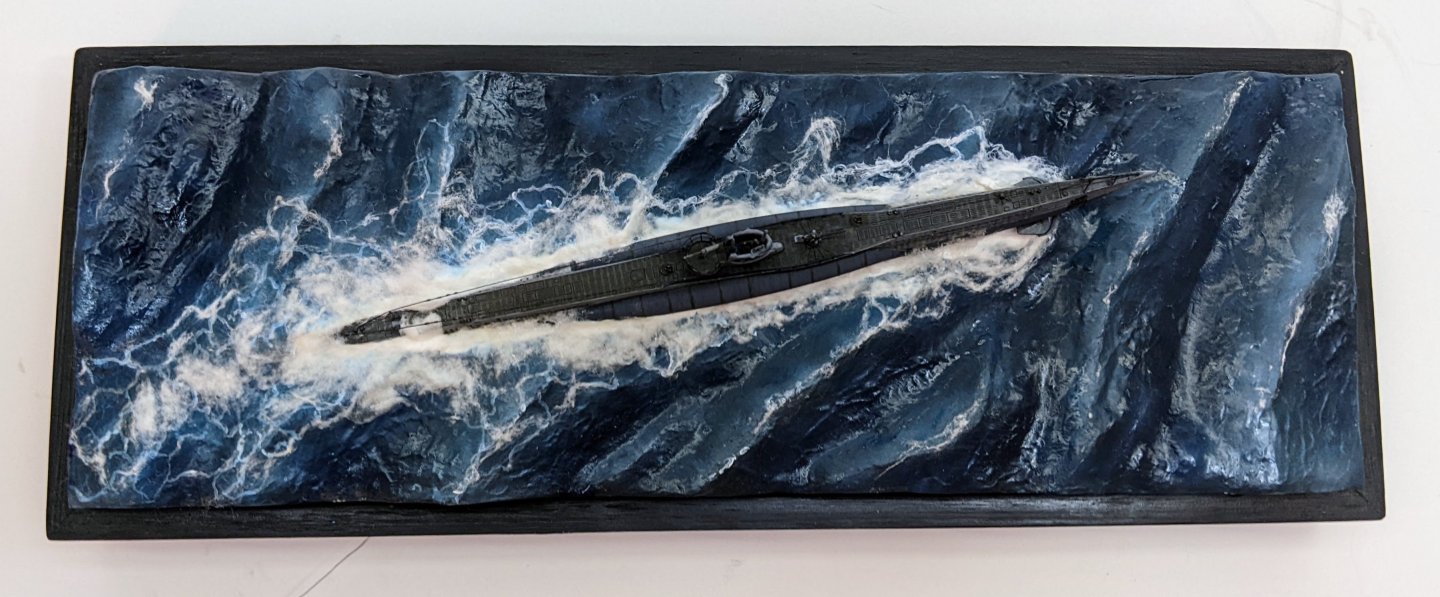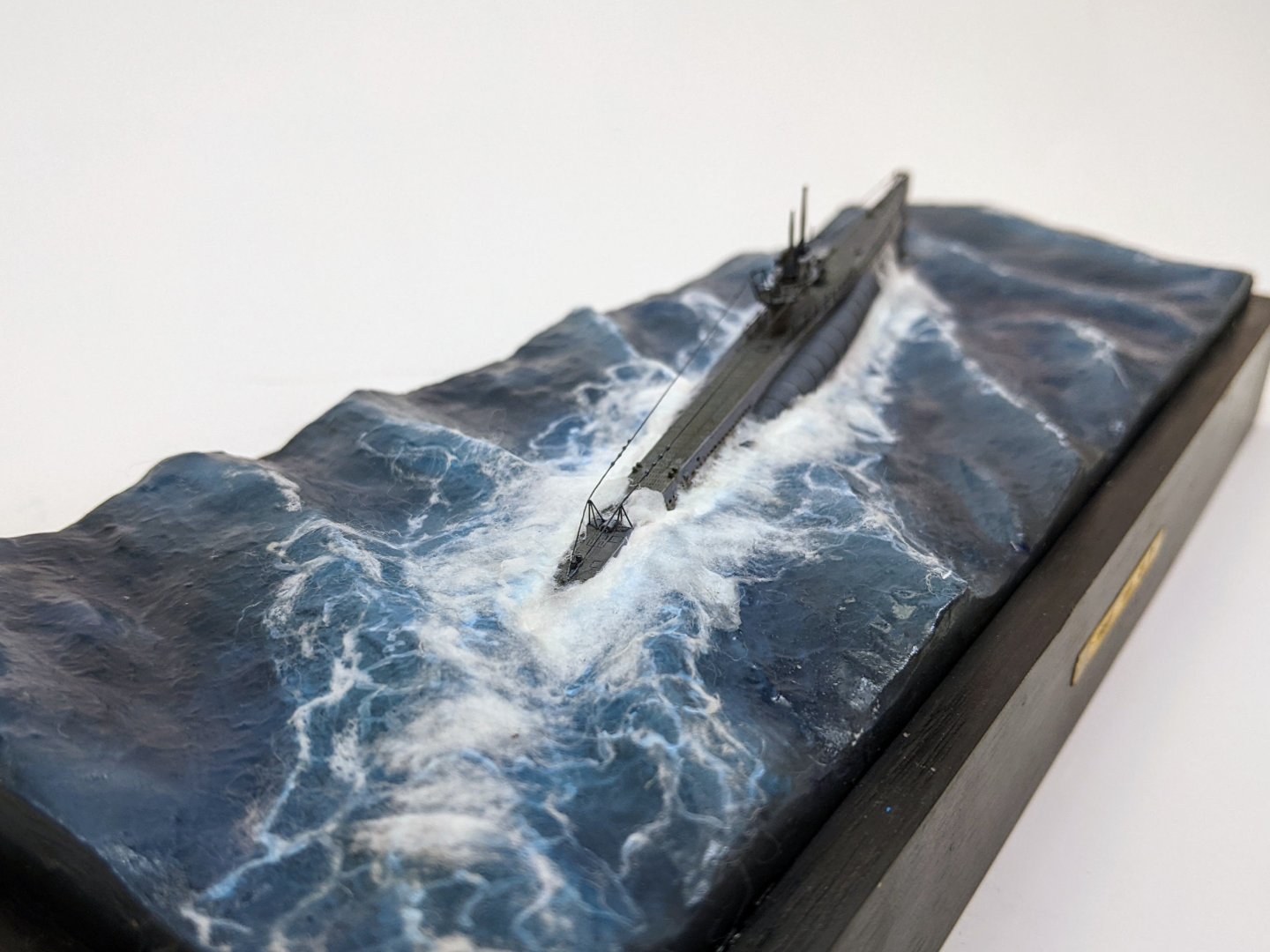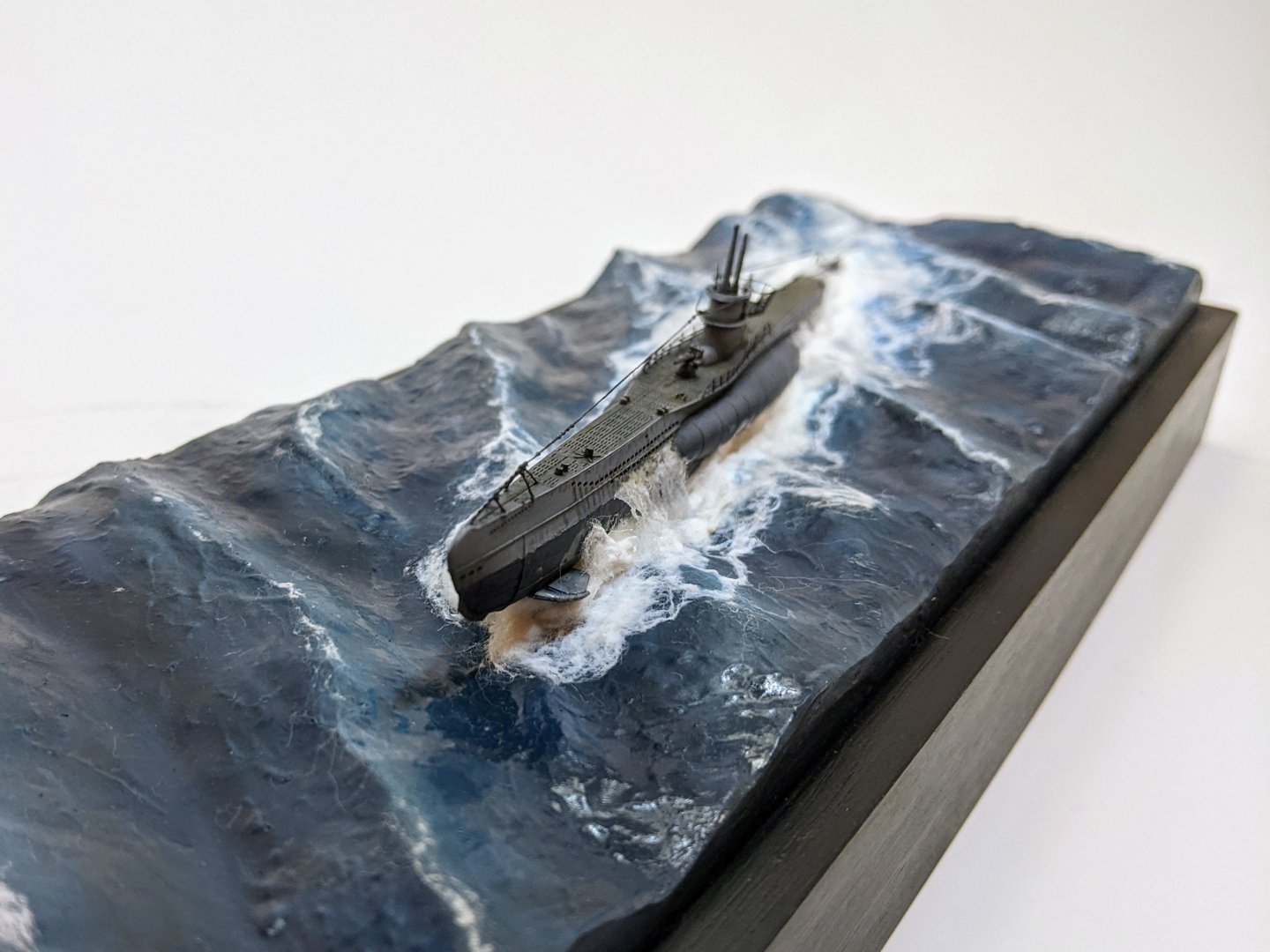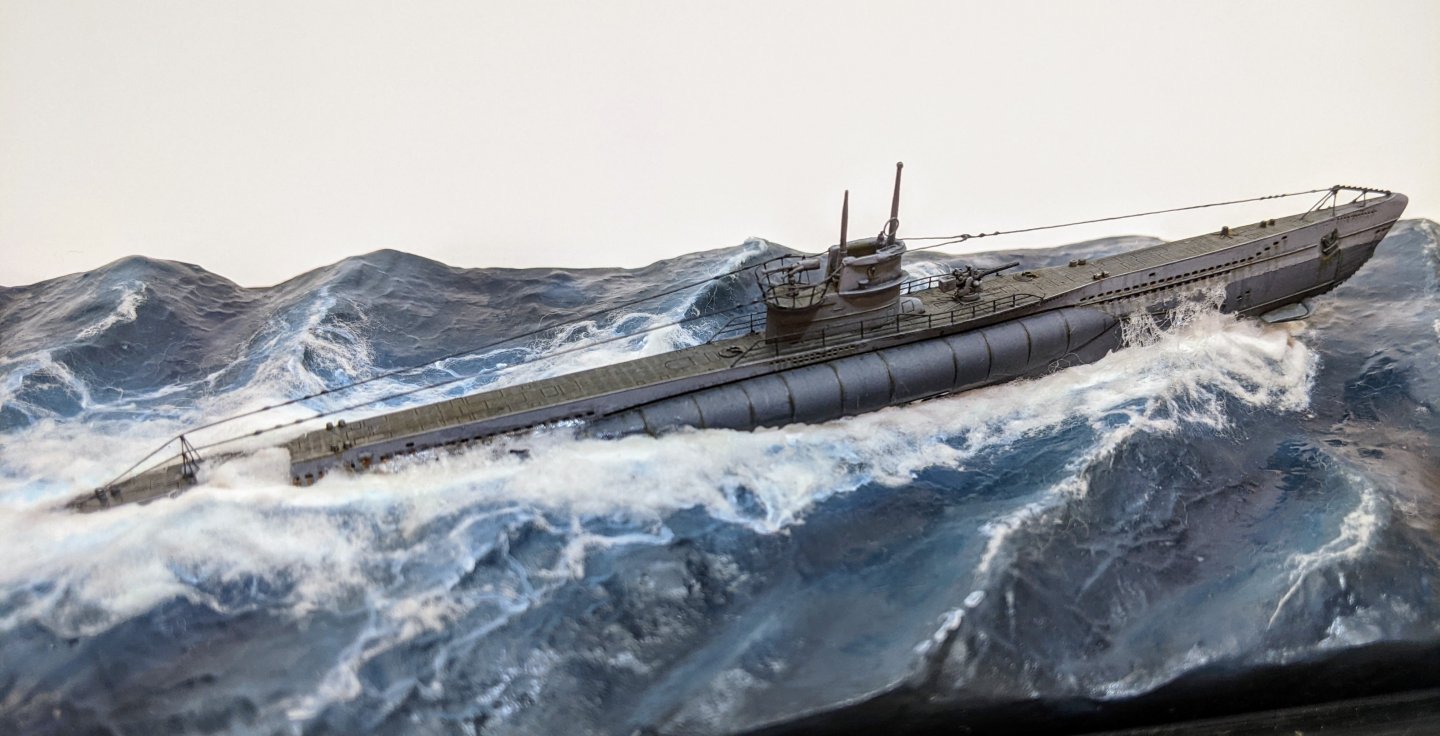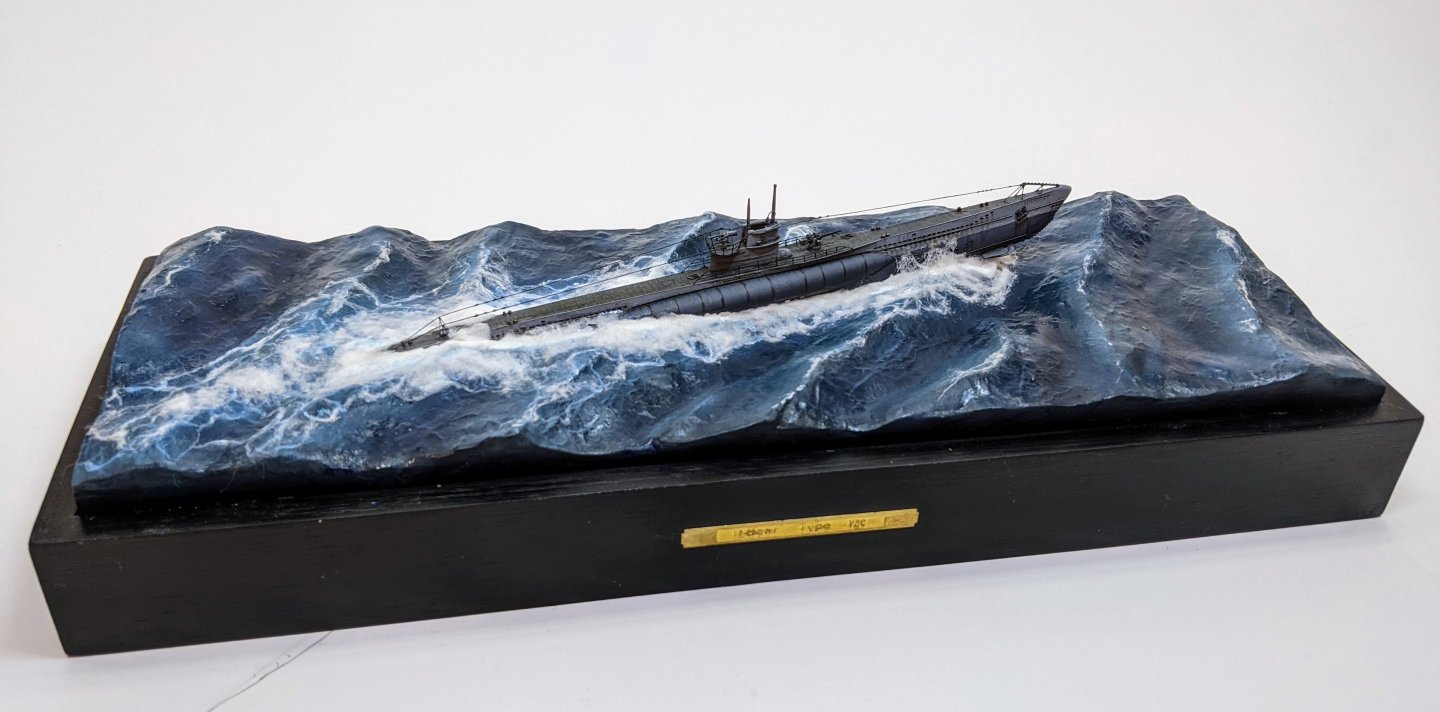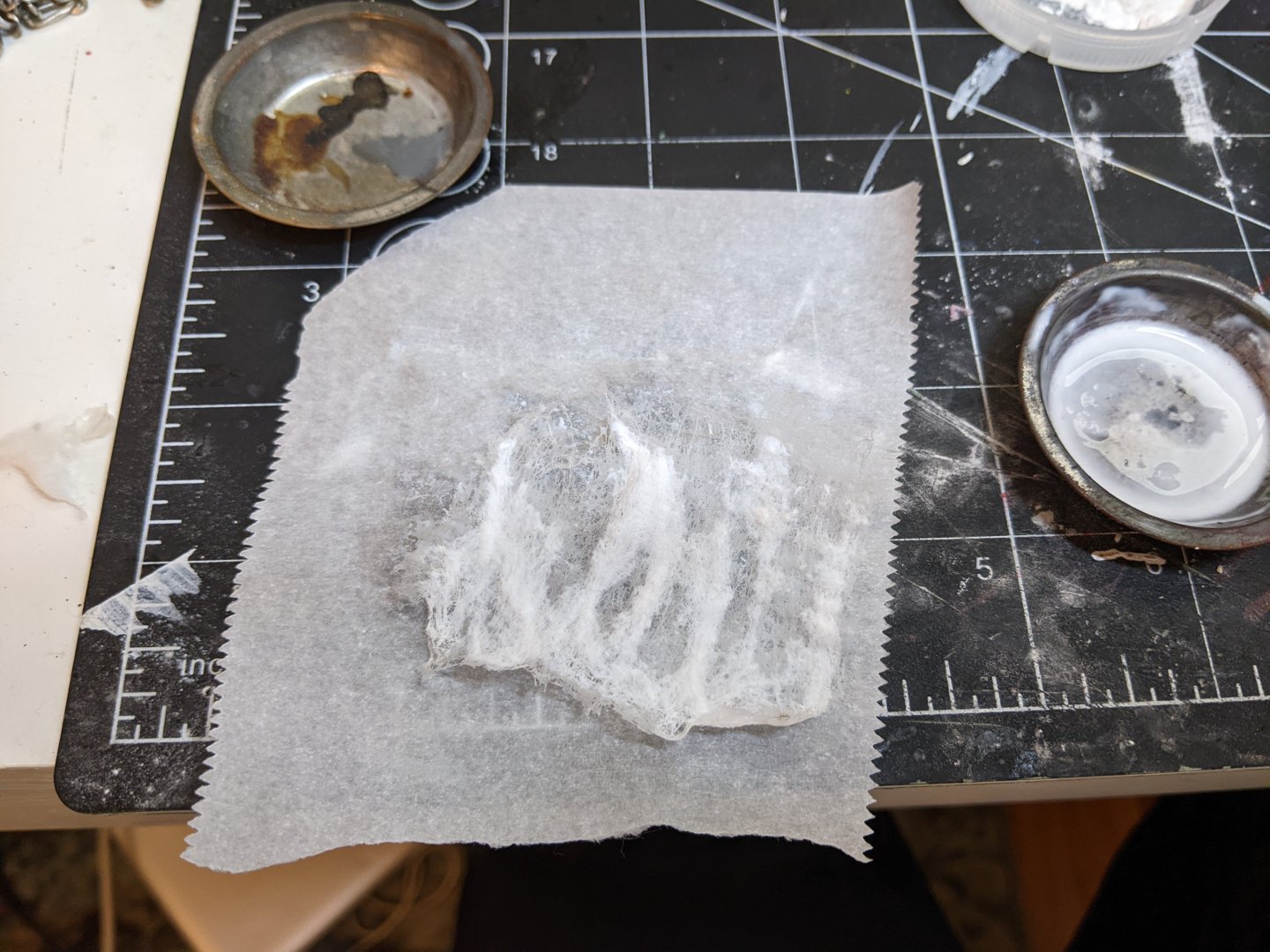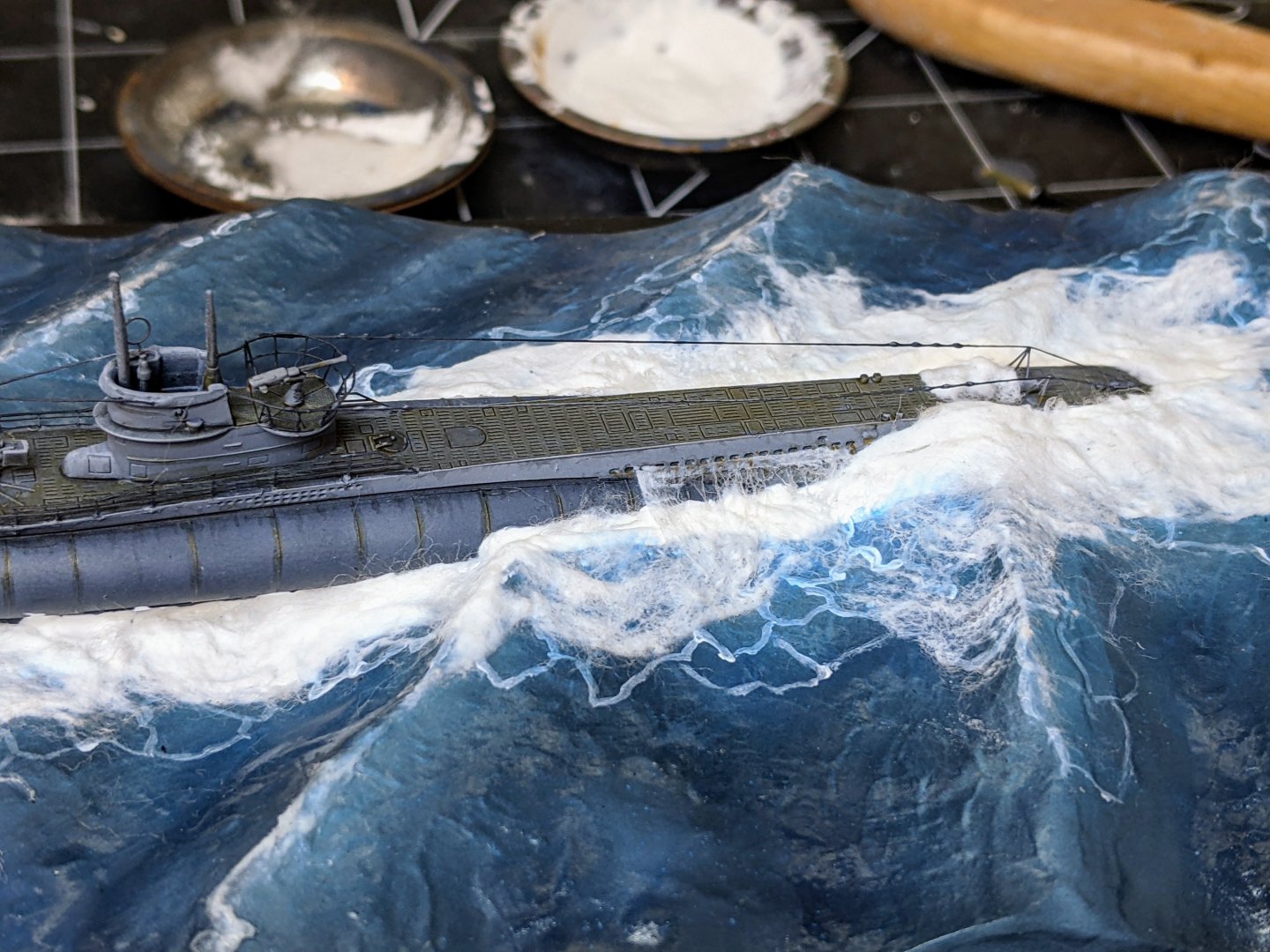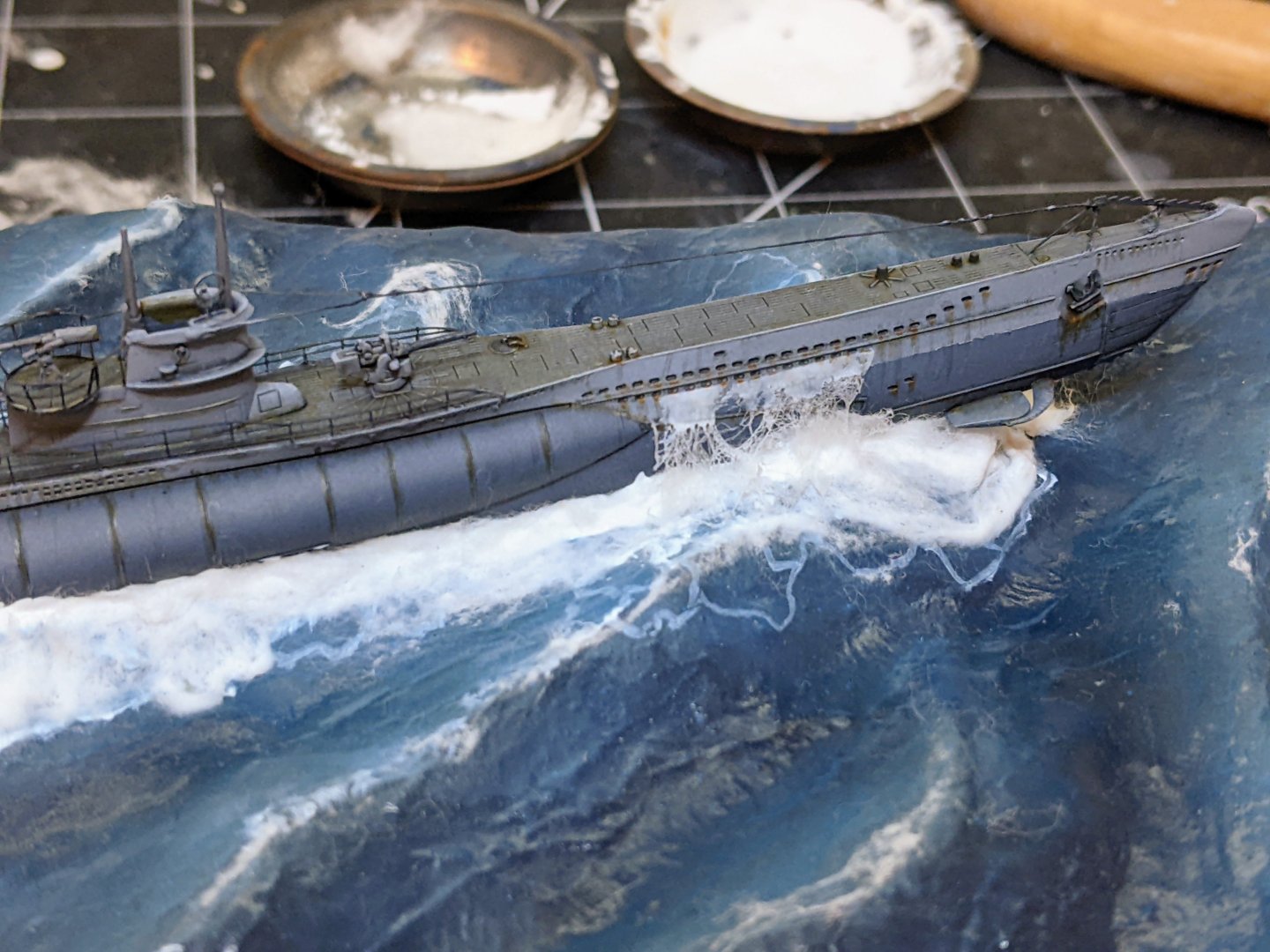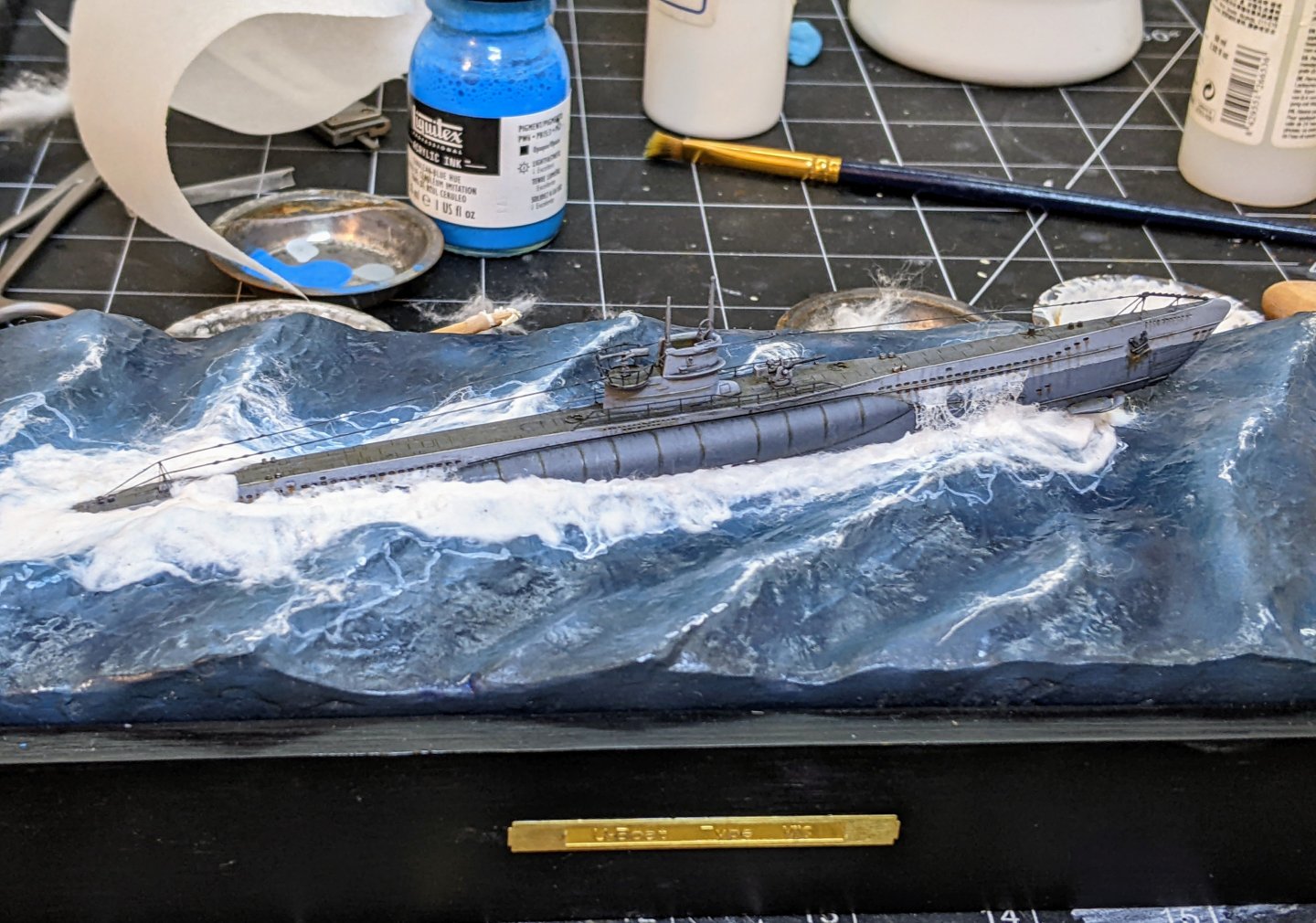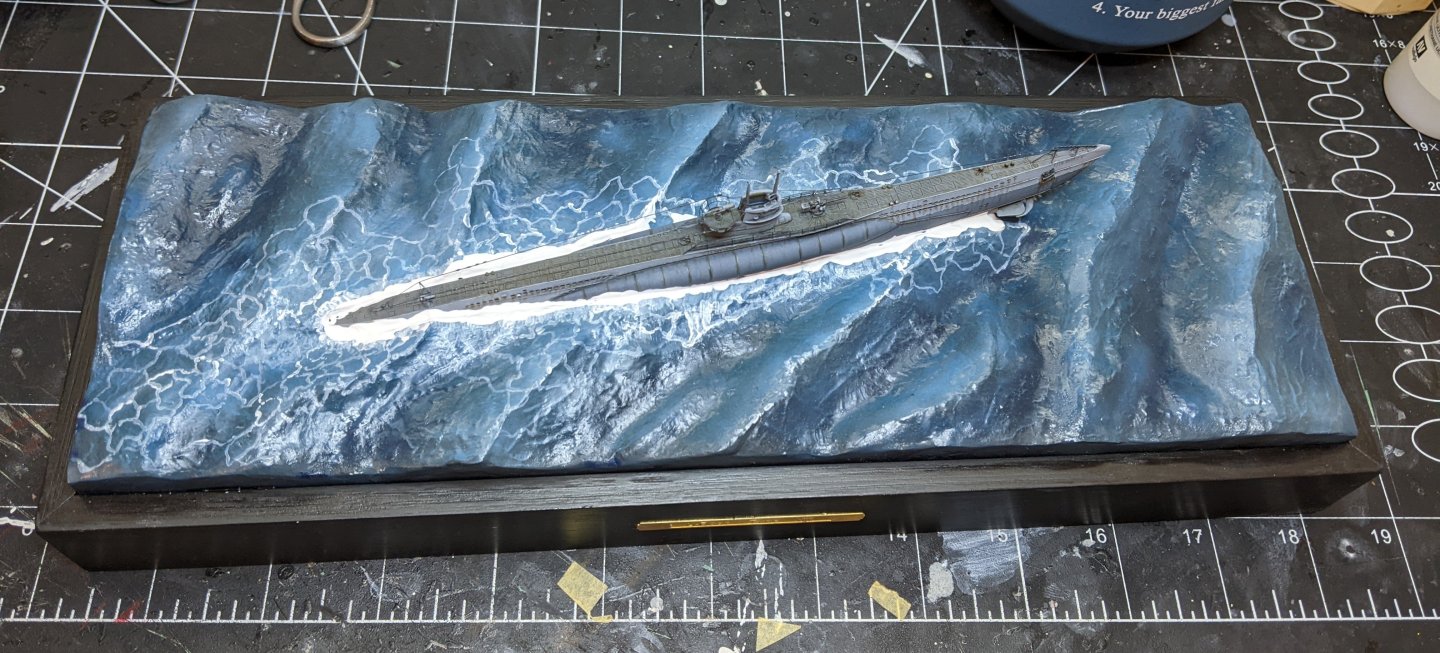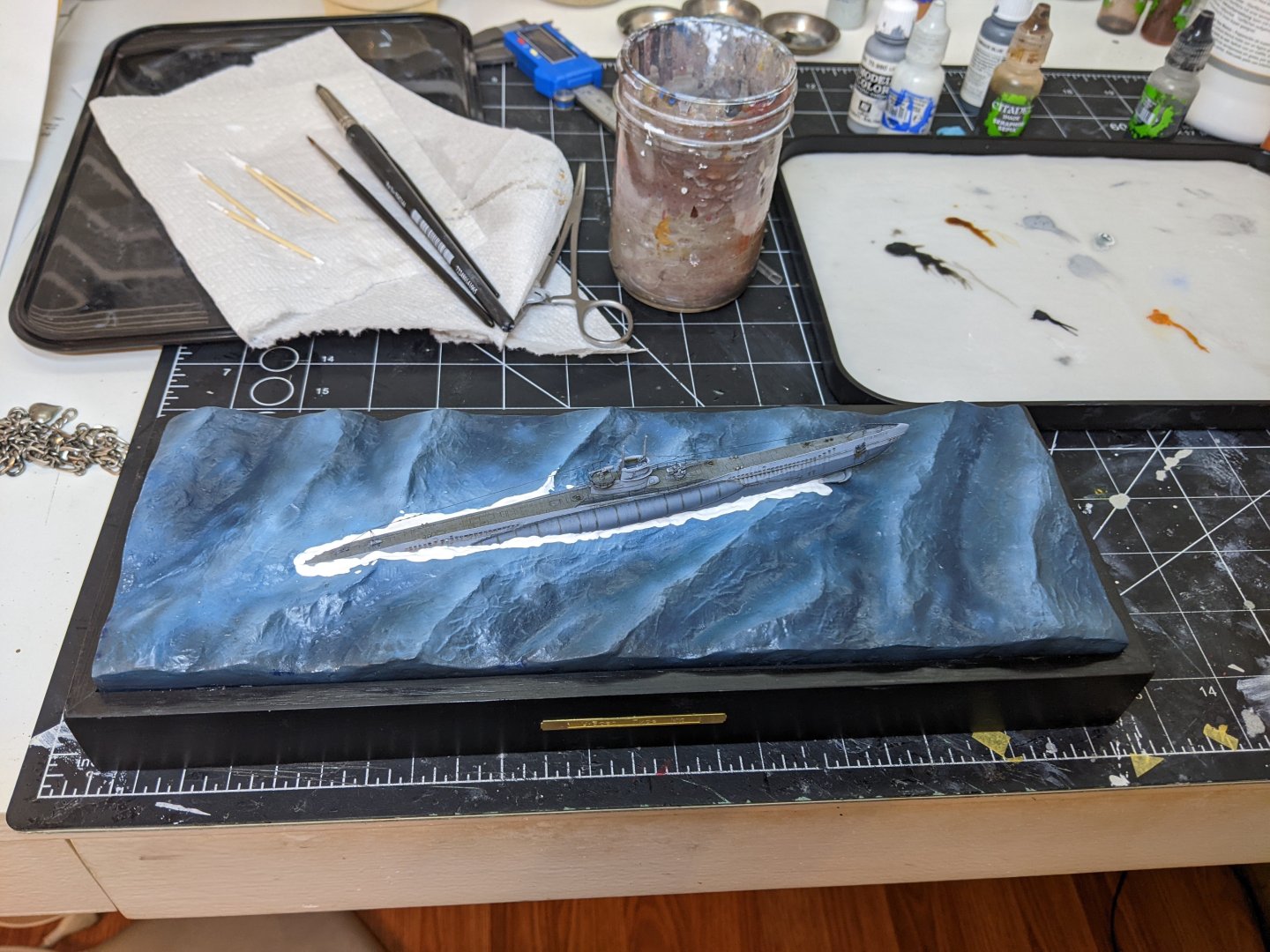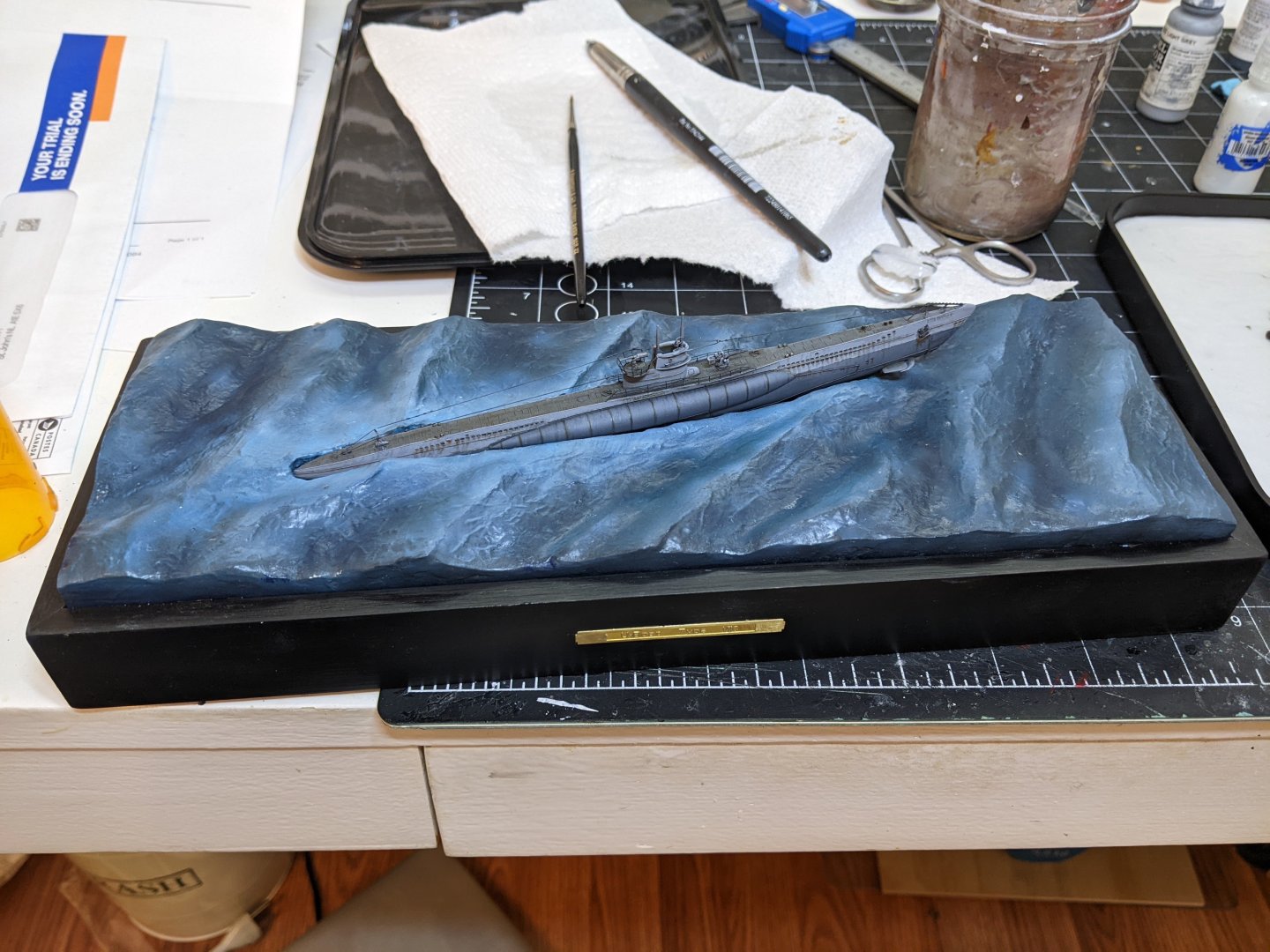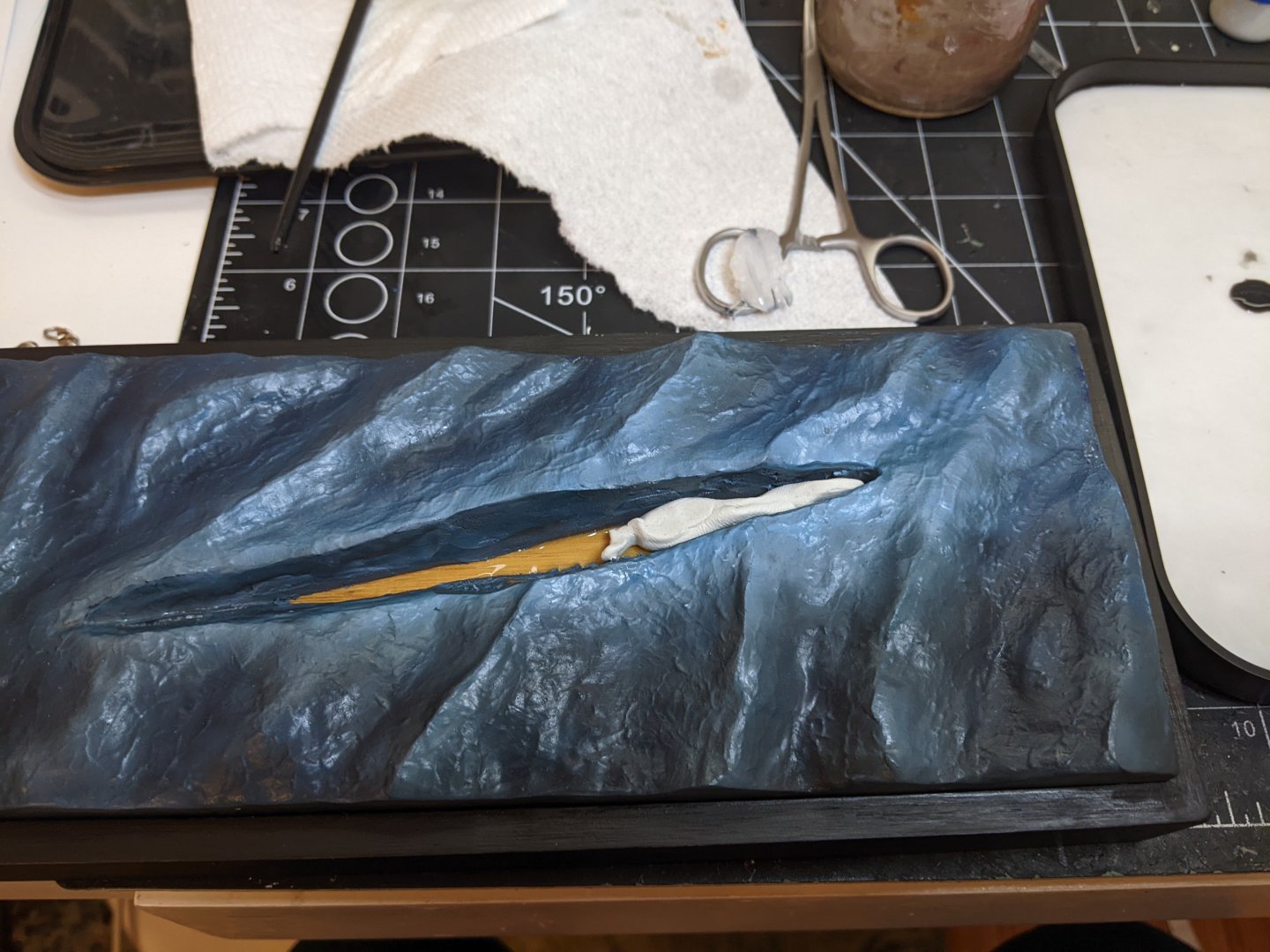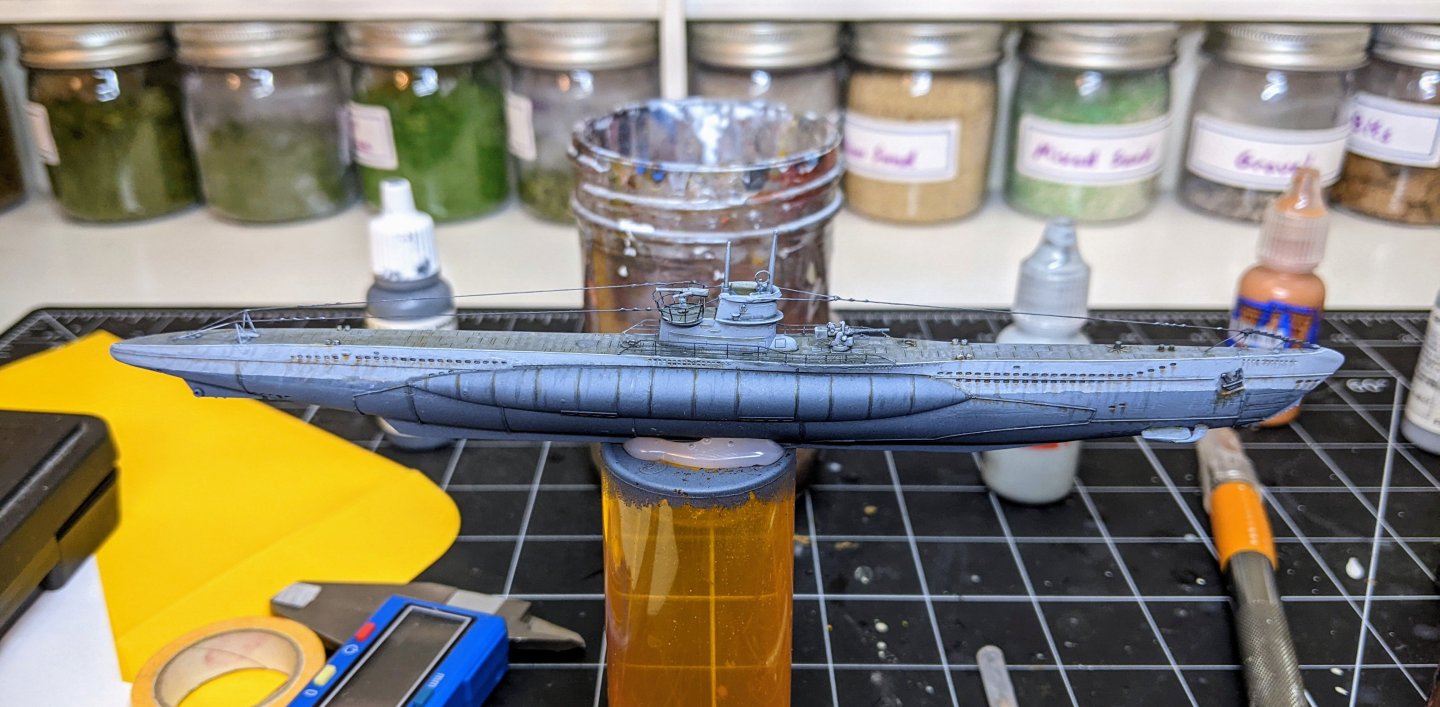-
Posts
1,345 -
Joined
-
Last visited
Content Type
Profiles
Forums
Gallery
Events
Everything posted by Thukydides
-
As Chris said really it is up to you. The reality is that the state of a deck would have changed significantly depending on the circumstances (are they cleared for action or just sailing along). So you have essentially two choices: Pick the exact scenario you are trying to depict and do so accurately (e.g. show the tackles laid out if the ship was ready for action or shut the ports and secure the cannons to the side of the bulwarks if just sailing along). Do some sort of representative scenario (this is what most people are trying to do). Essentially you are depicting some of the many things that were done on the ship even though it is technically inaccurate to have them happening simultaneously. But in this case it comes down to what you want to depict and how aesthetically you want to present it (a ship model is a work of art after all). Though with #1 there might be a technical right answer there is most definitely no right answer to number two as it depends on what YOU are trying to depict. TLDR: do what you want
-
Fantastic work Glenn. She really is exquisite. I have enjoyed following along watching her take shape.
- 840 replies
-
- winchelsea
- Syren Ship Model Company
-
(and 1 more)
Tagged with:
-
I use Lego. Many people have at least a bit of Lego around and it is square to very exacting tolerances. Just build a Lego block of the appropriate size and clamp it to the bulkheads. You can use up to 4 of them to secure each bulkhead one by one. I think there are some pictures from the early part of my alert build if you need to visually see what I mean.
- 312 replies
-
- Chile
- Latin America
-
(and 6 more)
Tagged with:
-
Log #10: Depictions of Perseus My work on documenting my research on the knee of the head and finalizing my design has taken longer than I thought so in the meantime I thought I would share some more information on potentially relevant contemporary depictions of Perseus and her sister ships. I have already mentioned the bowl and the tobacco box, so today we will cover all of the other depictions I have found. I do cover more possible depictions in my document which I will release at some point when it is ready, but for this log I will restrict myself to the depictions I actually believe show Sphinx class ships. Joseph Marshall, HMS Sphinx Stern View Science Museum Group. HMS Sphinx. 1864-4/2. Date Made: Circa 1759-1837 Joseph Marshall was a marine painter active from 1755-1779. He is best known for a commission he did for George III depicting ships of each class in the Royal Navy. In 1773 Joseph Marshall was commissioned by Lord Sandwich, First Lord of the Admiralty, for George III to produce a number of perspective paintings of Royal Navy ships. The perspectives themselves were produced by draughtsmen Joseph Williams and John Binmer working from the original plans while George Marshall was responsible for painting all the pictures. The lead ship of the Sphinx class was one of the ships captured in these paintings. The stern view was drafted by Joseph Williams and the bow view by John Binmer. Both paintings show a considerable amount of detail of the carvings which match those depicted on the plans and also painted decorations which were not in the plans There is no indication as to where Joseph Marshall might have gotten the inspiration for these painted decorative elements. The fact that the paintings were reproduced from the plans suggests that Marshall did not have access to a model of Sphinx as a source reference. The paintings were completed sometime in 1775, around the time that Sphinx was launched, so it is possible that Marshall viewed the ship itself, but it seems more likely that the decorative elements represent his own artistic inspiration. Dominic Serres, Destruction of the American Fleet at Penobscot Bay National Maritime Museum, Greenwich, London. BHC0425. Date Made: Late 18th century Domnic Serres was born in France in the early 18th century. In 1773 he received a royal commission to depict a visit of George III to inspect the fleet and was later appointed to be Marine Painter to George III. Serres was a prolific painter and founding member of the Royal Academy. He died in 1793. Both the Galatea and Camilla were present in this engagement and are presumably among the British ships shown from the middle and to the right of the painting. There are not many details visible and all of the ships appear to have black lower transoms. In fact they almost appear as if they were largely copies of one another. During the Seven Years War Serres painted scenes based on sketches made by Richard Short, a purser in the Navy. However, there is no indication as to whether or not this painting was based on an eyewitness sketch. Given the uncertainty around how accurate of a depiction it is and also the fact that it is impossible to know which of the ships might be the Galatea or Camilla this painting should probably not be relied upon other than as potentially a general depiction of warships of the period. Drawing of Camilla National Maritime Museum, Greenwich, London. PAH9227. Date Made: Circa 1825 H.M.S. Camilla in a sea passage between rocky coasts, unknown artist. The forecastle appears to have built up bulwarks, but this does not appear to be also true of the quarterdeck. If this does indeed depict Camilla, it is clearly a drawing of her late in her career as she features the Nelson chequer. If anyone knows of any other potential depictions of Sphinx class ships I would love to hear about them. I am already aware of two more which I am pretty sure do not depict them: Thomas Luny, HMS Perseus in Plymouth Sound - likely depicts the later Laurel class HMS Perseus John Thomas Serres, H.M.S. Camilla, 20 Guns - the painting is clearly not of HMS Camilla (wrong number of ports, not quarter galleries) even though the frame labels it as such.
-
I only just noticed you had started a new log. Looking good so far. Are you planning on putting sails on her like with trial?
- 35 replies
-
- vanguard models
- Adder
-
(and 2 more)
Tagged with:
-
It really comes down to personal preference in a case like this. As you articulated there are advantages to either method. Painting on a flat surface up to an edge is a relatively easy task to get a clean line with. Just go slowly, make sure your hand is resting on somthing and use a relatively small brush when you get near the line. Make one stroke close to the line, but not right on it, then do a second stroke where you almost push the paint you already laid down right up to the line (if you go on youtube and look up tutorials of cutting in the edges of walls, the technique is very similar just on a larger scale). Beware of having too much paint on your brush as that is how you loose control and overpaint. So if you have a steady hand that is what I would do.
-
I believe wefalck covered most of what I would suggest. Only thing I will add is the plank size and single vs double needs to be built into your original plan. The lines from the plan would have been the lines for the frame on the original ship and the size of the plank you put on them would be whatever size was used scaled down to your scale. Kit manufacturers when double planking take this into consideration and to save money use a thinner outer layer of planks and make the bulkheads smaller to compensate for the extra thickness of two planking layers. So essentially if you wanted to double plank you would need to adjust your plans accordingly.
- 312 replies
-
- Chile
- Latin America
-
(and 6 more)
Tagged with:
-
Thanks Ian, you should try one sometime. They are fun to make and if you do it with a small simple kit there is not a lot of pressure to get it perfect.
-
Thanks Mike, I have a snow powder, but it is really fine (which looks great as snow) but it didn't play nice as foam. At some point I want to try getting a more course shiny snow powder and I will try it again the next time I do a seascape.
-
I am calling this one complete. All in all it was a fun little project and I learned lots about what not to do for next time I feel like doing another side project. I feel like water is one of those things you really need to try a few times before you really get it right so I am not discouraged by all the shortcomings. And here are the final beauty shots.
-
I was going to try snow, but the stuff I had didn't look right so I pivoted to the cotton. The gesso can work, I have seen examples that use it and they are stunning, the problem is I lack the skill to do it right. Maybe next time. Like everything the first time is always fraught as you don't know what you don't know. I already have a bunch of ideas for things I need to change the next time I decide to do a seascape.
-
Yes those lines are the majority of what I meant by some touchups. I was attempting to make foam lines, but it didn't work out as well as I wanted. However, I plan to go back in with very small bits of cotton wool to cover over the lines. I tried it in one or two places and it seemed to work Painting them over won't work unless I go in with the airbrush and at this point that is not really an option. I did try glazing over with some blue ink to tone them down, but it didn't really have the effect I wanted so I suspect all of them are going to have to be covered by little thin lines of cotton. Then just some minor use of gloss varnish to make certain parts of the sub look more "wet".
-
So I lied when I said I would stick it on the shelf for a few days. Tonight I decided to give the foam another go and this time used cotton balls and mod podge. This worked better, though as you will see the effect was not perfect. I wanted to try and depict water flowing out of the holes in the uboat as if it had just surfaced and so I stretched out some cotton on some parchment paper and coated it in mod podge. I then blasted it with the hair dryer (because I don’t like waiting for things to dry). Once dry I peeled it off the paper. The thinner parts ended up looking better so I cut them off in the shapes I needed. I then carefully glued them in place. You can see here the look on the stern. And then larger ones for the bow. With that the model is pretty much done though I may add a few more touch ups to the foam before I take the final pictures. Overall I am relatively pleased with it for a first attempt at water. If you look to close the illusion falls apart, but from normal viewing distances it sells the illusion.
-

Greetings from a clueless Patrick O'Brian fan
Thukydides replied to Galkar's topic in New member Introductions
Welcome, I also came from miniature wargaming painting. Take your time and do lots of reading. Even though it is a huge learning curve, you may find that more skills from miniature painting transfer over than you might have originally thought. -
Minor update. I have started working in the foam lines with gesso. I am unsure how much of this to do and my plan for the thick foam didn't work out like I planned so I think I will put it on the shelf for a few days and think about what needs to be done.
-
Painting is now pretty much complete with only a few minor touchup still necessary. However, these will be made after I have secured the model to the base so that was the next step. After test fitting things I added some epoxy putty to the stern area as I needed to make sure it stayed at the correct angle. This will also help to hold the model in place. Then I placed the model in the base positioning it so that the the stern is pretty much level with the water. I want the waves to just be washing over the very end, but not to obscure too much of the model. Then with a toothpick I carefully applied gesso around the edges to fill in the gaps. This doubles as both the means of securing the model, but also is what I will be using for the foam. At this point I was just trying to carefully fill in the gap between the water and the model. Once everything is dried then I will move on to deciding where the foam will extend to.
-
I love the miniature lobster trap. On the lobster itself have you ever tried drybrushing. That is a really easy way to pick out detail and generate contrast. Then you could coat it with a few washes of various shades of black and brown to darken the recesses.
- 65 replies
-
- Maine Peapod
- Midwest Products
-
(and 1 more)
Tagged with:
-
The top of the sub deck should show you the faring line for that part of the hull, but the angle that the fairing occurs at will change depending where on the bulkhead you are sanding. The best way to do it is to have a test batten ready to hold against the bulkheads at various angles. When it is bent over the bulkheads there should be no space between the batten and the bulkheads. If there is then the hull is not faired enough. In general the process for me is take a sanding stick and fair over multiple bulkheads at once. That helps to get the correct curve. The amount of char visible can also serve as an indicator. However the best check is the batten test.
-
Great job, I like the black background. It makes the excellent planking job really stand out.
- 82 replies
-
- half hull planking project
- half hull
-
(and 2 more)
Tagged with:
-
Minor update. I got some more time to paint this evening and made a lot of progress on the weathering. Still some minor adjustments to go, but she is starting to look more like what I was aiming for.
About us
Modelshipworld - Advancing Ship Modeling through Research
SSL Secured
Your security is important for us so this Website is SSL-Secured
NRG Mailing Address
Nautical Research Guild
237 South Lincoln Street
Westmont IL, 60559-1917
Model Ship World ® and the MSW logo are Registered Trademarks, and belong to the Nautical Research Guild (United States Patent and Trademark Office: No. 6,929,264 & No. 6,929,274, registered Dec. 20, 2022)
Helpful Links
About the NRG
If you enjoy building ship models that are historically accurate as well as beautiful, then The Nautical Research Guild (NRG) is just right for you.
The Guild is a non-profit educational organization whose mission is to “Advance Ship Modeling Through Research”. We provide support to our members in their efforts to raise the quality of their model ships.
The Nautical Research Guild has published our world-renowned quarterly magazine, The Nautical Research Journal, since 1955. The pages of the Journal are full of articles by accomplished ship modelers who show you how they create those exquisite details on their models, and by maritime historians who show you the correct details to build. The Journal is available in both print and digital editions. Go to the NRG web site (www.thenrg.org) to download a complimentary digital copy of the Journal. The NRG also publishes plan sets, books and compilations of back issues of the Journal and the former Ships in Scale and Model Ship Builder magazines.

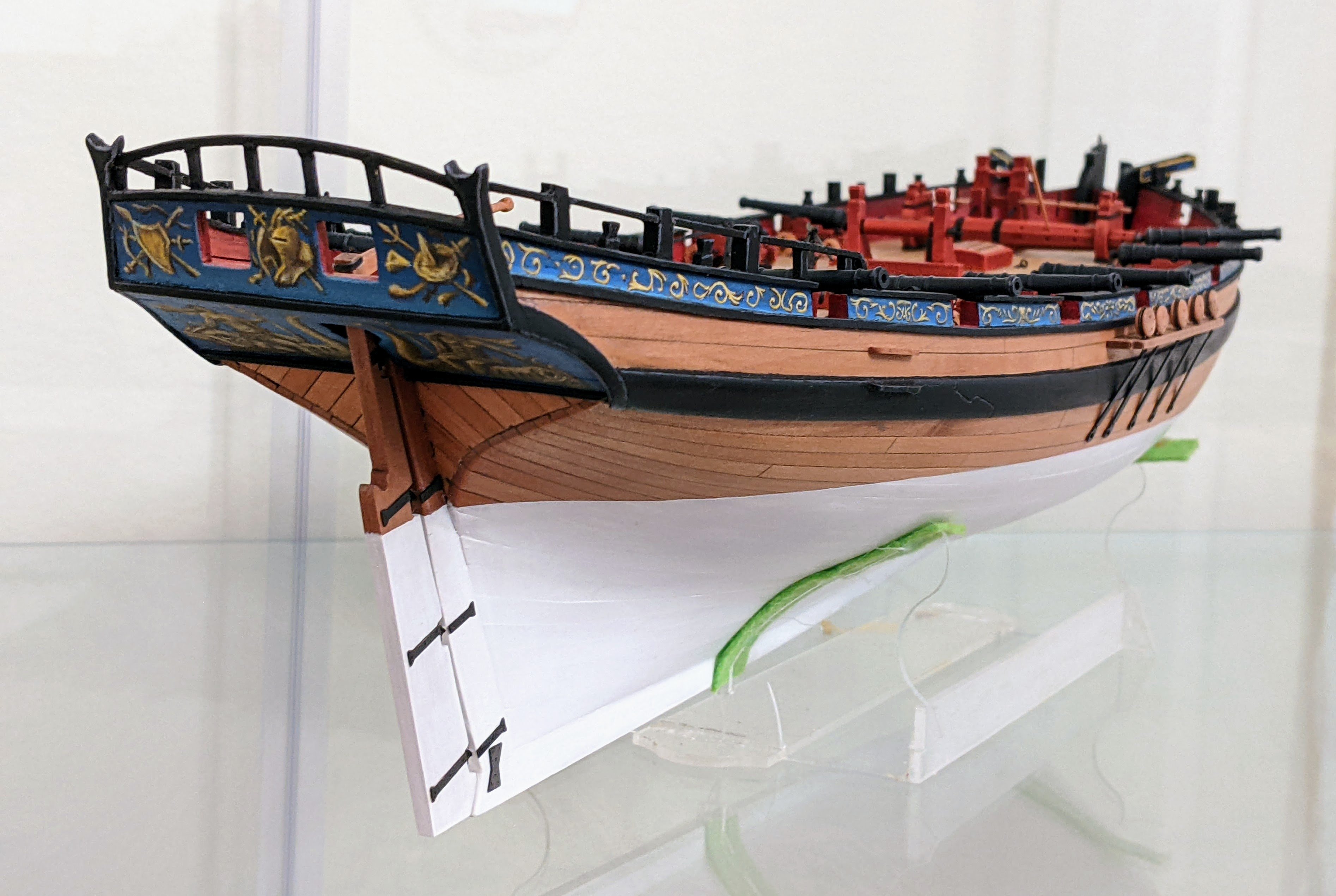


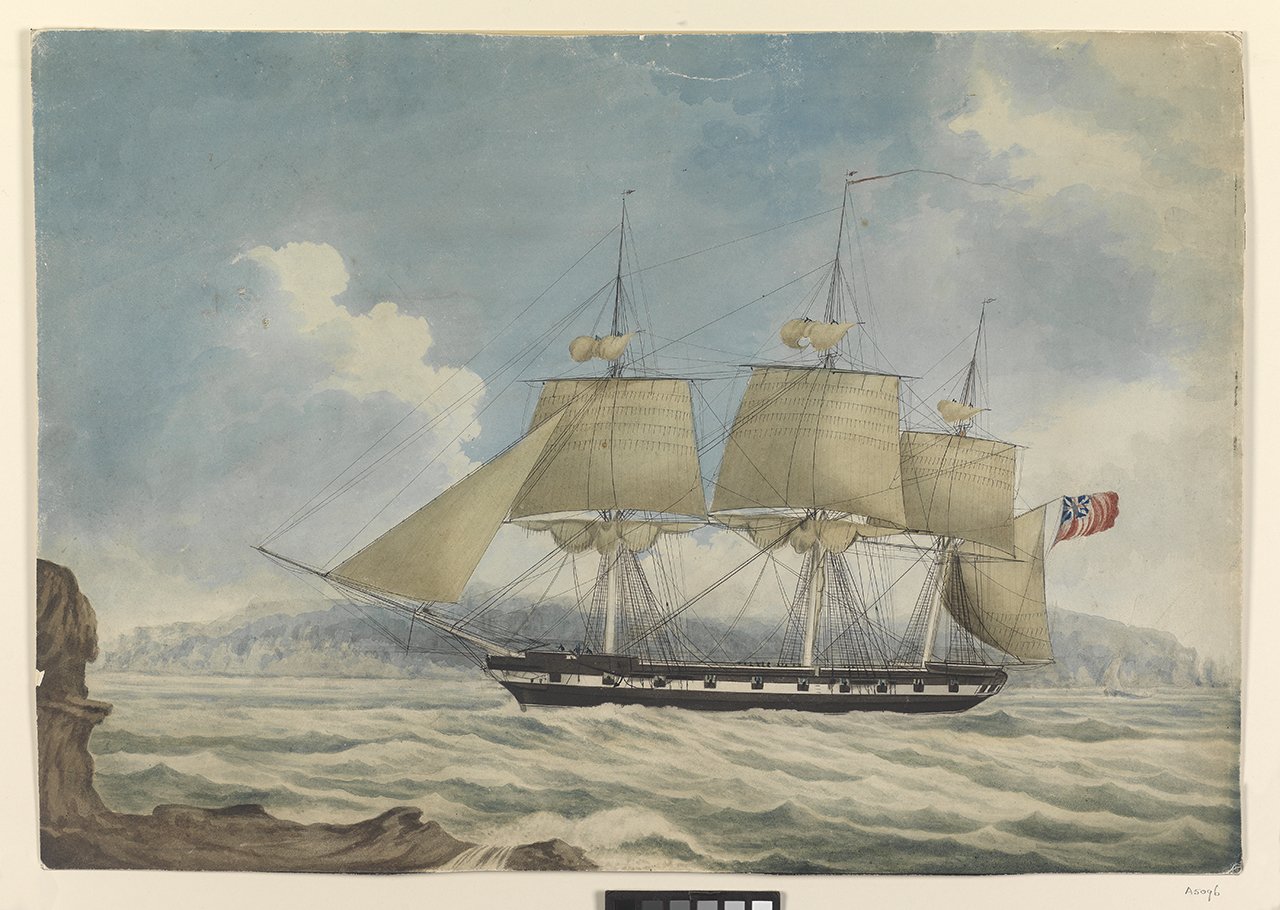
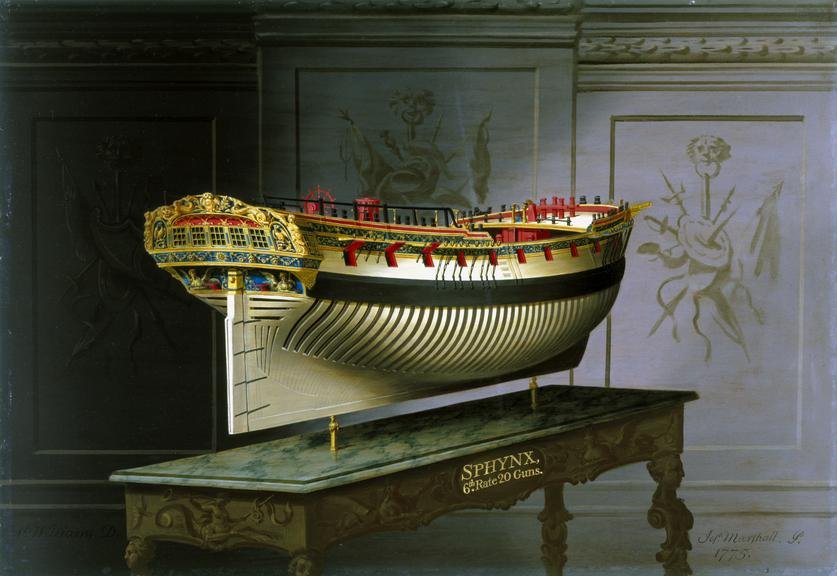
.jpg.8f81bed76e4dfe77df2f9f2a05c8efe7.jpg)
